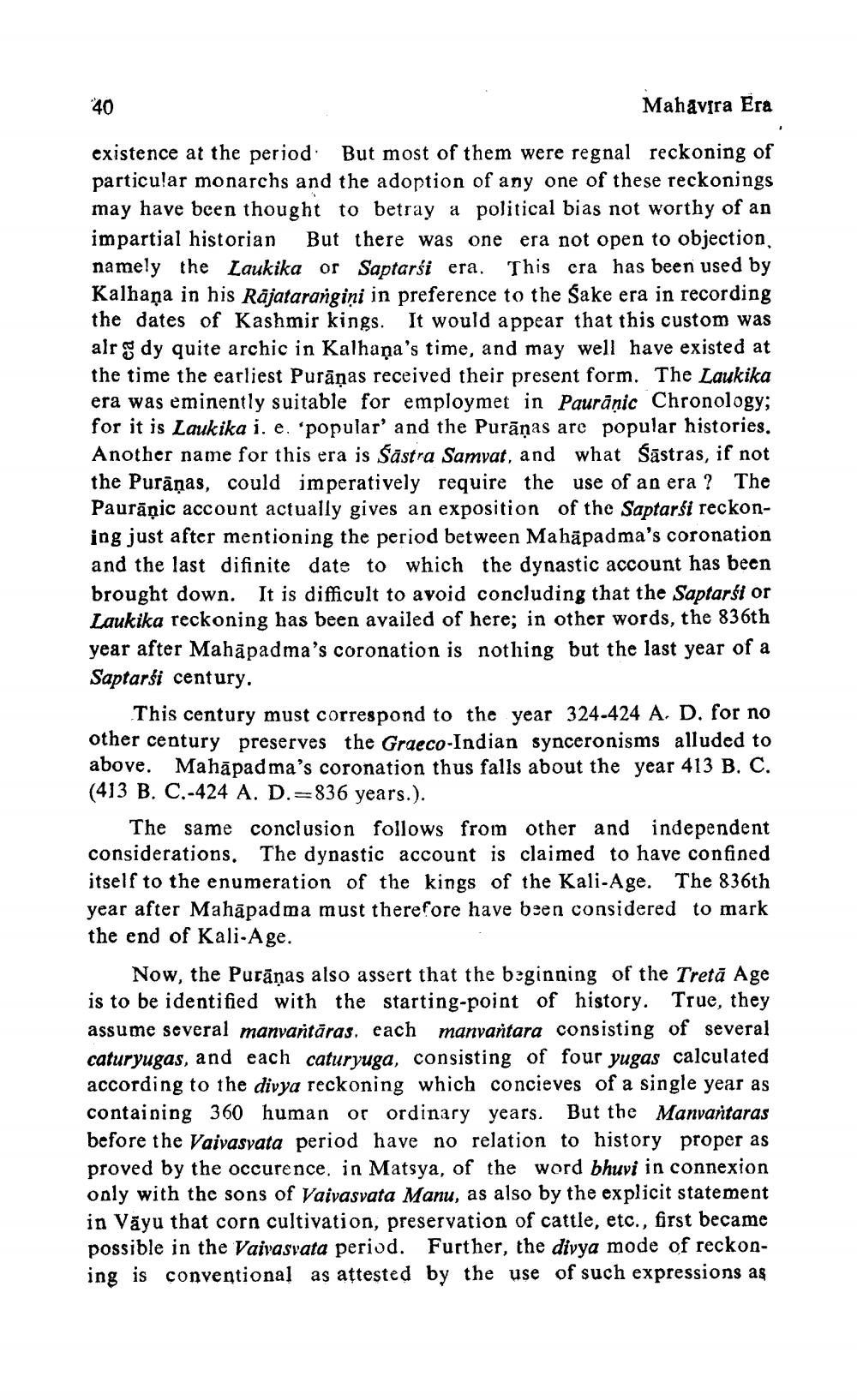________________
40
Mahavira Era
existence at the period. But most of them were regnal reckoning of particular monarchs and the adoption of any one of these reckonings may have been thought to betray a political bias not worthy of an impartial historian But there was one era not open to objection, namely the Laukika or Saptarsi era. This era has been used by Kalhana in his Rājatarangini in preference to the Sake era in recording the dates of Kashmir kings. It would appear that this custom was alr dy quite archic in Kalhana's time, and may well have existed at the time the earliest Purāṇas received their present form. The Laukika era was eminently suitable for employmet in Paurānic Chronology; for it is Laukika i. e. 'popular' and the Purānas are popular histories. Another name for this era is Sastra Samvat, and what Sāstras, if not the Puranas, could imperatively require the use of an era ? The Paurāņic account actually gives an exposition of the Saptarsi reckoning just after mentioning the period between Mahāpadma's coronation and the last difinite date to which the dynastic account has been brought down. It is difficult to avoid concluding that the Saptarsi or Laukika reckoning has been availed of here; in other words, the 836th year after Mahāpadma's coronation is nothing but the last year of a Saptarši century.
This century must correspond to the year 324-424 A. D. for no other century preserves the Graeco-Indian synceronisms alluded to above. Mahāpadma's coronation thus falls about the year 413 B. C. (413 B. C.-424 A. D.=836 years.).
The same conclusion follows from other and independent considerations. The dynastic account is claimed to have confined itself to the enumeration of the kings of the Kali-Age. The 836th year after Mahāpadma must therefore have been considered to mark the end of Kali-Age.
Ti
Now, the Purānas also assert that the beginning of the Tretā Age is to be identified with the starting-point of history. True, they assume several manvantăras, each manvantara consisting of several caturyugas, and each caturyuga, consisting of four yugas calculated according to the divya reckoning which concieves of a single year as containing 360 human or ordinary years. But the Manvantaras before the Vaivasyata period have no relation to history proper as proved by the occurence, in Matsya, of the word bhuvi in connexion only with the sons of Vaivasvata Manu, as also by the explicit statement in Vãyu that corn cultivation, preservation of cattle, etc., first became possible in the Vaivasvata period. Further, the divya mode of reckoning is conventional as attested by the use of such expressions as




